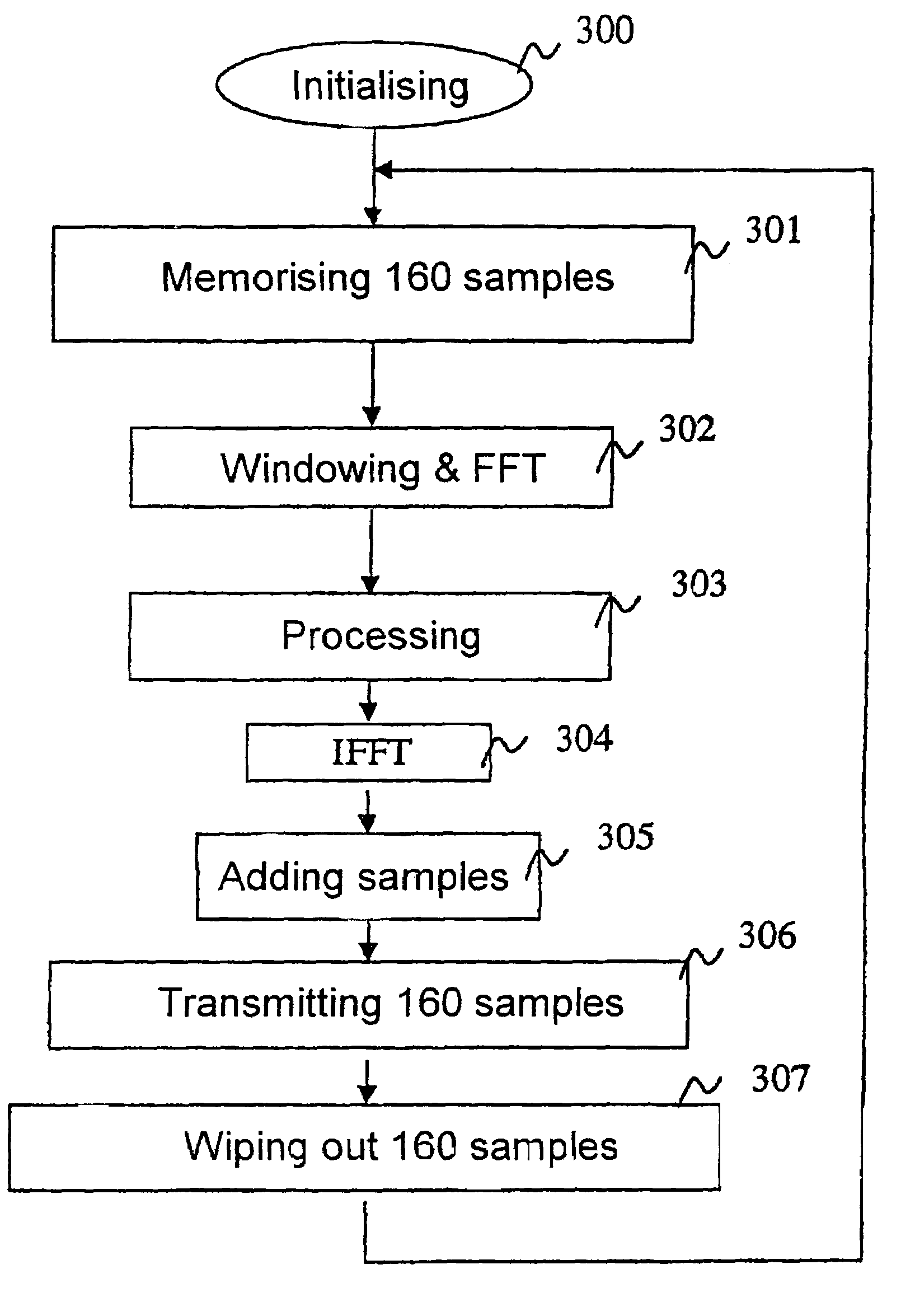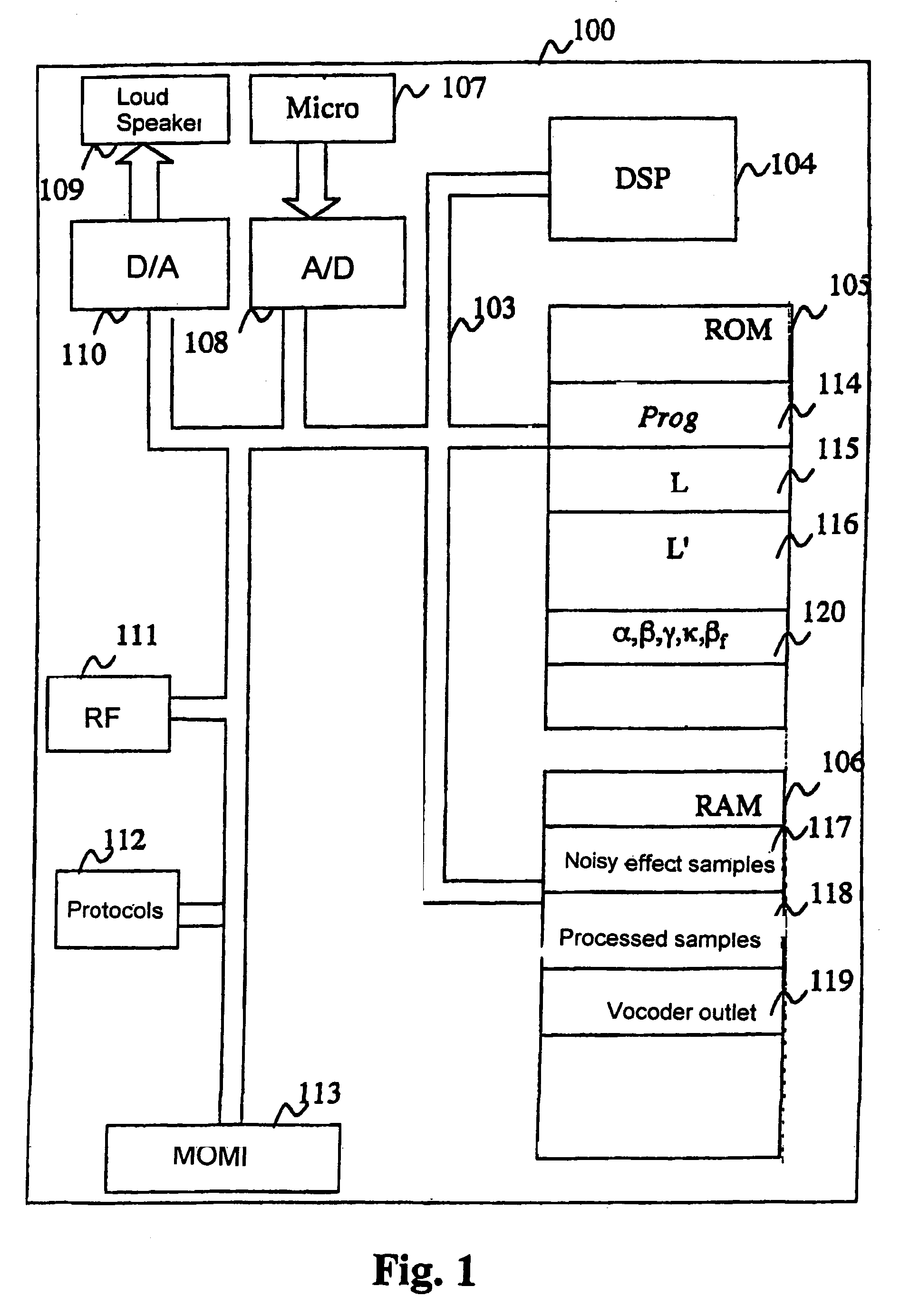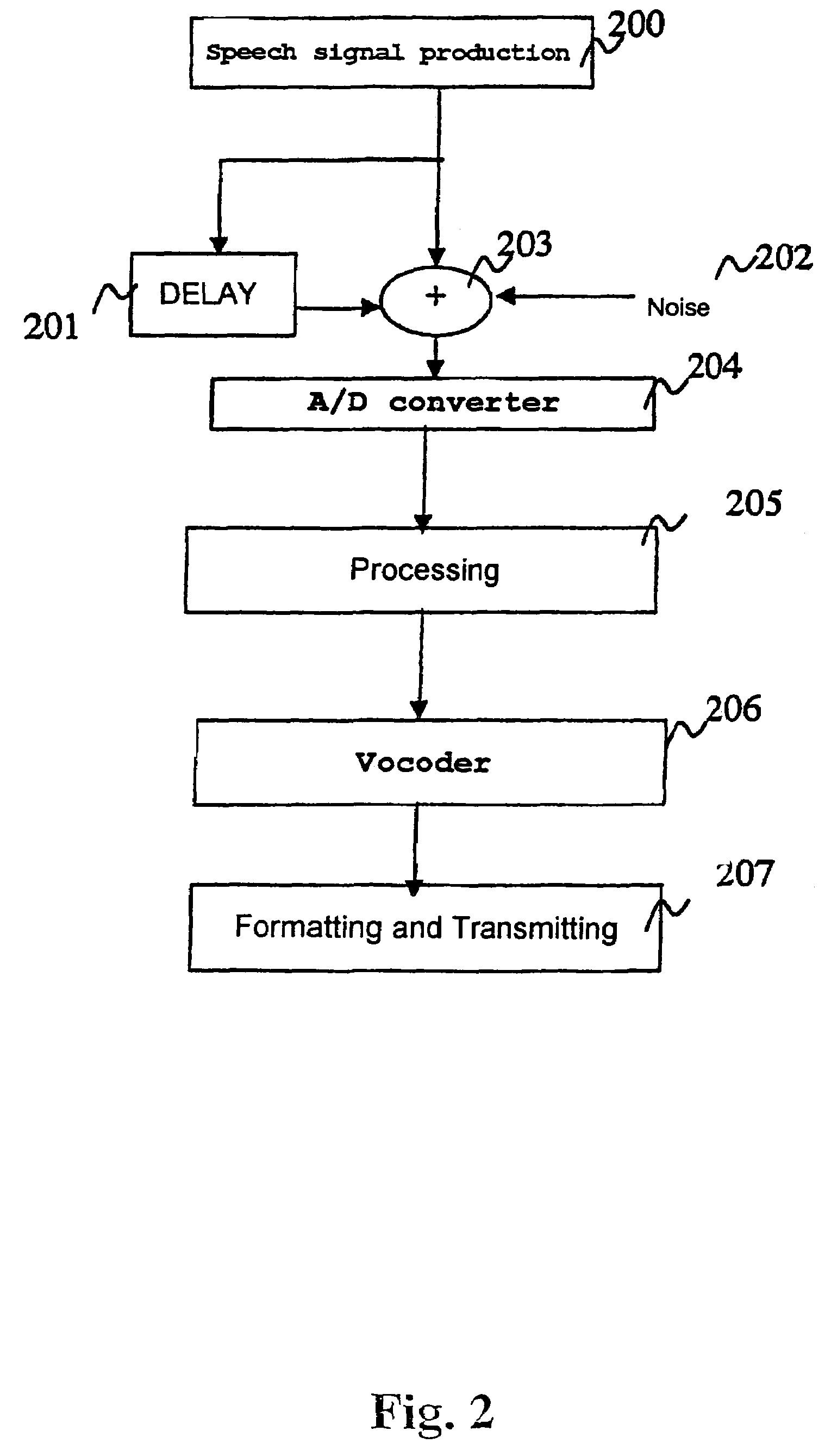Device and method for processing an audio signal
a technology of audio signal and processing device, applied in the field of processing audio signal, can solve the problems of increasing application complexity, inconvenience of generating additional costs, affecting the quality of communication, etc., and achieve the effect of reducing complexity, reducing noise, and optimising the efficiency of this processing
- Summary
- Abstract
- Description
- Claims
- Application Information
AI Technical Summary
Benefits of technology
Problems solved by technology
Method used
Image
Examples
Embodiment Construction
[0065]The general principle of the invention lies in the synchronisation:[0066]of the processing based on an FFT notably noise cancellation or reduction processing; and[0067]speech processing of speech coding type.
[0068]Indeed, the FFT and IFFT process the windows comprising a magnitude order of 2 samples (typically 128 or 256).
[0069]On the other hand, speech coding takes into account windows of different sizes (typically the speech processing in the context of GSM considers windows of 160 samples).
[0070]In the case, for example, of a radiotelephone in compliance with the GSM standards published by the European Telecommunication Standard Institute (ETSI), the speech signal is sampled at a frequency of 8 kHz before being transmitted by a frame of 20 ms in a compressed form to a recipient.
[0071]It is noted that, according to the GSM standard, speech coding is carried out on frames of 160 samples, via a vocoder. This coding, which is a function of the desired flow, is notably specified...
PUM
 Login to View More
Login to View More Abstract
Description
Claims
Application Information
 Login to View More
Login to View More - R&D
- Intellectual Property
- Life Sciences
- Materials
- Tech Scout
- Unparalleled Data Quality
- Higher Quality Content
- 60% Fewer Hallucinations
Browse by: Latest US Patents, China's latest patents, Technical Efficacy Thesaurus, Application Domain, Technology Topic, Popular Technical Reports.
© 2025 PatSnap. All rights reserved.Legal|Privacy policy|Modern Slavery Act Transparency Statement|Sitemap|About US| Contact US: help@patsnap.com



